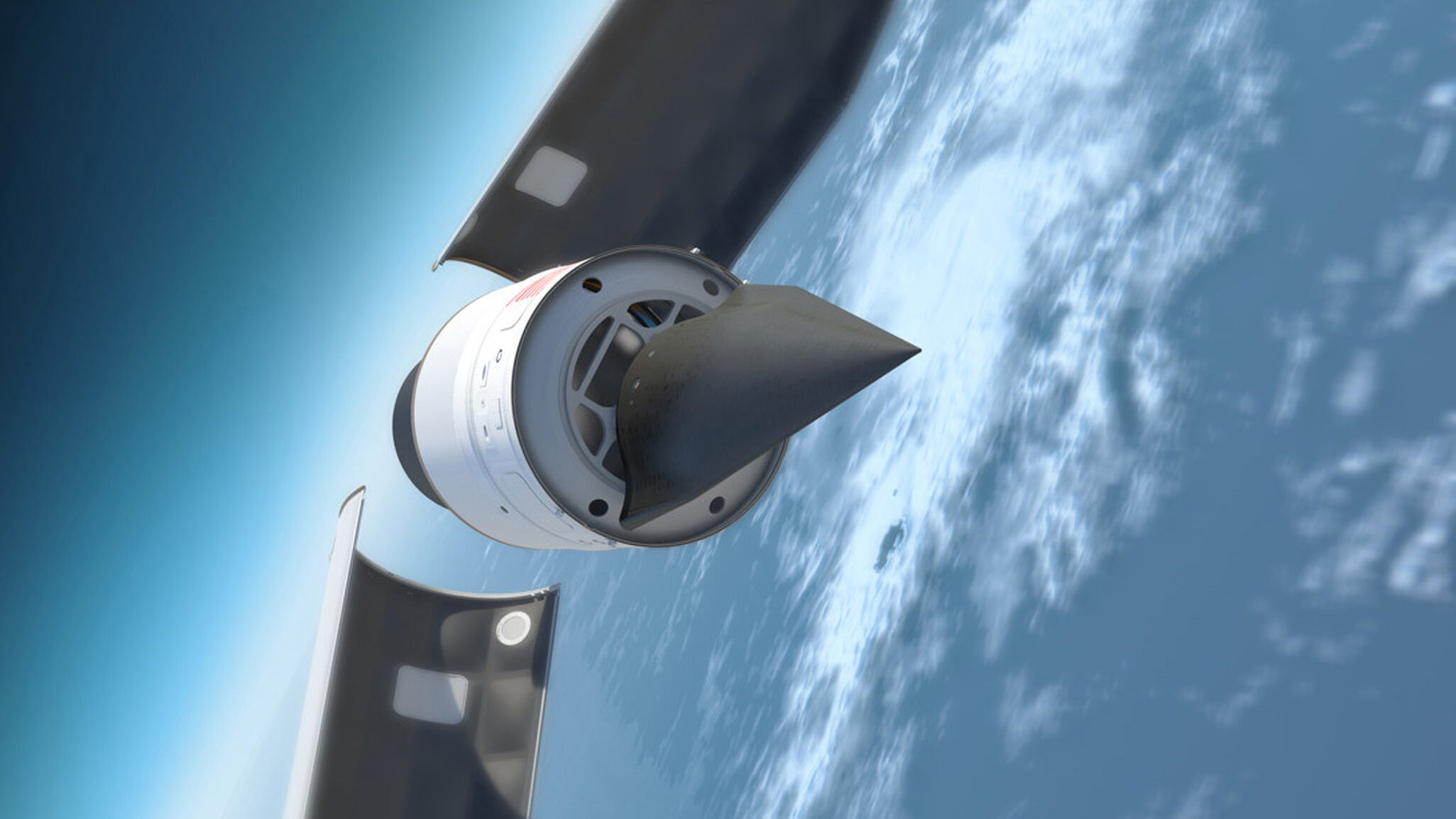
This illustration depicts the Defense Advanced Research Products Agency’s (DARPA) Falcon Hypersonic Test Vehicle as it emerges from its rocket nose cone and prepares to re-enter the Earth’s atmosphere. (DARPA)
WASHINGTON: A new report from the Defense Department signals a warning for the major defense contractors not to expect an easy time with merger and acquisition activity under the Biden administration.
The report, “State of Competition within the Defense Industrial Base,” comes out of a July executive order from President Joe Biden requiring a look across all of American industry at the state of competition. In noting that the number of aerospace and defense primes has shrunk from 51 to 5 since the 1990s, the report concludes that “promoting competition and ensuring it is fair and open for future programs is a critical Department priority.”
A statement released by the White House — unusual for defense industrial base documents that come out of the Pentagon — noted that “extreme consolidation in the defense sector has reduced competition and heightened national security risks … [C]onsolidation leaves DoD increasingly reliant on a handful of companies for critical defense capabilities. It also hurts taxpayers, as companies no longer feel the competitive pressure to innovate or perform at the highest level to win contracts.”
RELATED: North Korea’s hypersonic missile claims are credible, exclusive analysis shows
That statement seems like a big red flag being waved at companies looking at defense M&A activity, especially in light of the scuttling of the Lockheed Martin acquisition of Aerojet Rocketdyne.
The Trump administration was seen as supportive of major M&A during its time in office. Notable deals included the merger of L3 and Harris, Northrop Grumman buying Orbital ATK for $9.2 billion, SAIC’s $2.5 billion procurement of Engility, General Dynamics $9.6 billion buy of CSRA, and perhaps the biggest, the merger between Raytheon and United Technologies Corporation that now represents the second largest defense firm, by defense revenue, in the world.
In contrast, the Biden administration has seen more leery of big corporate moves, with Federal Trade Commissioner Lina Khan a well-known proponent of anti-trust lawsuits. While smaller M&A deals may still go through — services contractor Amentum today closed on a $1.9 billion acquisition of rival PAE — the FTC’s vote against the Lockheed-Aerojet effort, combined with the White House emphasis on the report’s warnings about M&A, seem to be a signal that prime acquisitions will receive a critical eye in the future.
RELATED: With Lockheed deal in doubt, Aerojet faces internal crisis
One area that the report specifically calls out as at-risk from M&A activity is all the rage right now: hypersonics.
“Within this sector, many primes, first-tier subcontractors, and first-tier material suppliers are positioning themselves to acquire lower-tiered hypersonic contractors and material suppliers. This vertical integration will likely lead to reduced competition and may eliminate it altogether,” the report warns. “As the demand for hypersonic weapons grows, so too will the need for specialized manufacturers and suppliers. However, these small and nascent companies are at risk of acquisition from the major primes and subcontractors.
“Acquisition of these specialized hypersonic niche contractors (especially at this early stage of hypersonic technology and hypersonic missile development) will effectively prevent any other company from entering the market, thereby leading to reduced or limited competition, and capacity issues in the future. When competition is no longer a variable for a company the only other acquisition approach may be sole-source contracting.”
The report does acknowledge that “studies of [consolidation] have not found a strong correlation between consolidation and increased program pricing,” but taxpayer concerns are just one part of what DoD is worried about. Consolidation, the report states, leads to a more risks in an already vulnerable supply chain.
Overall, the report breaks down into five main topic areas:
- Strengthening Merger Oversight, covering the concerns about M&A going forward.
- Addressing Intellectual Property Limitations, which calls for DoD to “remain conscious of potential unnecessary anticompetitive consequences of any new IP-related procedures” in order to spur tech-forward companies to work with the department. The question of whether DoD demands too much IP from companies has been a longstanding one, with dual-use firms often raising it as a major reason why they won’t work with the Pentagon.
- Increasing New Entrants, which is hardly a new topic. The report calls for continued small business outreach and the use of new acquisition authorities – including the much-ballyhooed OTA — to help “counteract the trend of overall shrinking” in the defense industrial base.
- Increasing Opportunities for Small Businesses, which follows along with the above point. The report calls for increased focus on “small disadvantaged businesses, women-owned small businesses, service disabled veteran owned small businesses, and HUBZone businesses,” special designations that have not had huge success landing deals with the department in the past.
- Implementing Sector-specific Supply Chain Resilience Plans, which is a catch-call category to make sure the department can keep making the weapons it needs.
That last section breaks down into five key areas that department leadership is concerned about: casting and forgings, missiles and munitions, energy storage and batteries, strategic and critical materials, and microelectronics.
Northrop sees F-16 IVEWS, IBCS as ‘multibillion dollar’ international sales drivers
In addition, CEO Kathy Warden says the company sees a chance to sell up to five Triton UAVs to the NATO alliance.


























